Dutch music seems to be rather unknown outside the low countries. Therefore, an attempt has been made in this article to make that music accessible. On the basis of a choice of composers, a chronological overview (of a thousand years) is writen about the music from the Low Countries, to make its development a bit audible.
The information comes largely from Wikipedia, the (short) pieces of music from YouTube. So it is possible, by the names and links used in the story, to find further information and to listen to many other examples of Dutch music. So no one is bound to the choices made here! We wish everyone a great pleasure in independently roaming though the music of the Low Countries. A more complete list of composers of the dutch culture is also linked.
Music from the early middle ages.
In ancient times borders were a rather vague concept. In addition, the composers in those times were anonymous. It was decided to include only music of famous composers and not to take the borders too tight. In the later time Mozart is included because there is pretty much documented of his time and his composing in The Hague. He is a reason to make a bit wider “view” not pretending he was Dutch! Here they are: some Dutch composers and a few examples of their works.
Hildegard van Bingen
(☼ Barnesheim 1098 – † Rupertsberg, 1179).
O vis æternitatis & Heaven and Earth & 11.000 Virgins (chants for St. Ursula)
& Spritus Sanctus.
She was a Benedictine abbess and is the first representative of the Low-German (Diets/Dutch) medieval mysticism. She was active in the field of religion, cosmology, science, philosophy, botany, music composition, poetry and linguistics. She is the first composer in the history of classical music who is known by name. The statement she was blessed is made on 10 May 2012. On October 7, 2012 she is also recognized as a church teacher. Both those statements are made by the Pope Benedict XVI.
.
Johannes Ciconia
(☼ Liège, 1373 – † Padwa, 1412).
Oh Rosa Bella & Sus une fontayne & Istampita „Amor per ti Sempre”
& Una panther (madrigaal)
![]() There have been at least three musicians with this name. Others are referred to as “the father” and “the” bastard”. Therefore, the questions “who did what and when” are very difficult to answer.
There have been at least three musicians with this name. Others are referred to as “the father” and “the” bastard”. Therefore, the questions “who did what and when” are very difficult to answer.
Willem (Guillaume) Dufay (read: Dufa-ie)
(☼ Beersel, 1397 – † Kamerijk (Frence: Cambrai), 1474?)
Mass for a soldier & Lamento to the fall of Constantinople & Mass for st. Anthonie of Padova (Offertorium: Veritas mea) & Missa se la face ay pale.
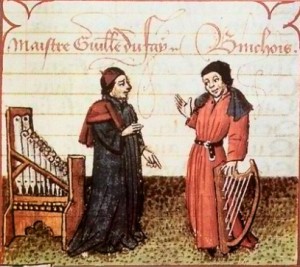 He was a composer at the time of the Burgundian Netherlands. He is considered as greatest composer of the 15th century “Flemish Polyphony” to which he was the first famous representative along with Gilles Binchois.
He was a composer at the time of the Burgundian Netherlands. He is considered as greatest composer of the 15th century “Flemish Polyphony” to which he was the first famous representative along with Gilles Binchois.
.
Johannes Ockeghem
(☼ Saint-Ghislain, 1420 – † Tours, 1497).
Deo gratias & Missa au travail suis & Missa prolationum & Chanson.
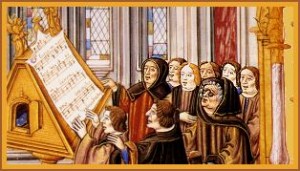 Ockeghem was a composer of the 15th century (in style of the “Flemish School”). He was probably born in Saint-Ghislain (Hainaut). After a brief period as a singer at the Our Lady church in Antwerp (1443-1444), he entered the service of Charles, Duke of Bourbon, in Moulins. In 1452 he was recruited by the French king Charles VII. Until his death on February 6, 1497 he was associated with the French monarchy (under Charles VII and Louis XI and Charles VIII).
Ockeghem was a composer of the 15th century (in style of the “Flemish School”). He was probably born in Saint-Ghislain (Hainaut). After a brief period as a singer at the Our Lady church in Antwerp (1443-1444), he entered the service of Charles, Duke of Bourbon, in Moulins. In 1452 he was recruited by the French king Charles VII. Until his death on February 6, 1497 he was associated with the French monarchy (under Charles VII and Louis XI and Charles VIII).
Jacob Obrecht
(☼ Ghent, 1457/1458 – † Ferrara, 1505).
Missa Caput & Salve Regina & Missa Maria kyrie & Salve Arbor vita.
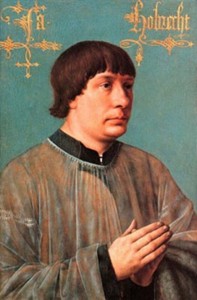 Jacob Obrecht wrote mostly sacred music: masses and motets. Of him also some secular songs are known. He was a follower of Johannes Ockeghem. Jacob Obrecht was with Josquin one of the leading representatives of the Flemish polyphony of the Middle Ages/Early Renaissance. In his masses and motets he always used the “cantus firmustechniek” around which an existing melody, the other voices in polyphonic composition are written. Despite sticking to the Dutch style Obrecht was very innovative, especially harmonically. In the variety of methods with the existing melody to go he was far ahead of his time. This was also well recognized by his contemporaries. So he was mentioned in the short list of great composers, despite he was, at that time, only 25 years old and stayed at the other side of Europe.
Jacob Obrecht wrote mostly sacred music: masses and motets. Of him also some secular songs are known. He was a follower of Johannes Ockeghem. Jacob Obrecht was with Josquin one of the leading representatives of the Flemish polyphony of the Middle Ages/Early Renaissance. In his masses and motets he always used the “cantus firmustechniek” around which an existing melody, the other voices in polyphonic composition are written. Despite sticking to the Dutch style Obrecht was very innovative, especially harmonically. In the variety of methods with the existing melody to go he was far ahead of his time. This was also well recognized by his contemporaries. So he was mentioned in the short list of great composers, despite he was, at that time, only 25 years old and stayed at the other side of Europe.
Adriaen Willaert
(☼ Rumbeke ca.1489 – † Venetië 7 december 1562).
Oh dolce vita mia & Oh magnum mysterium & Ave Maria & Lauda Jerusalem
He studied law in Paris, but did not complete those studies. He received his musical education from Jean Mouton. (Jean himself was a follower of Josquin Des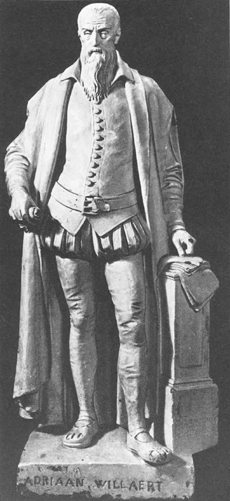 prez).
prez).
He studied law in Paris but did not complete those studies. He received his musical education from Jean Mouton. (Jean Mouton himself was a follower of Josquin Desprez).
Around 1515 he went to Italy (which at that time was common to many musicians from the Low Countries). Initially he worked in Rome and later in Ferrara.
First he worked for Alfonso I d’Este (Duke of Ferrara). Afterwards (1527-1562) he became chapel master of the chapel of San Marco in Venice.
See also the website of the Willaert foundation.
.
Cornelis Schuyt
(☼ Leiden, 1557 – † Leiden, 1616).
Voi bramate, ben mio (madrigaal) & Lieta piú dell’ usato & Amor & A play for five voices.
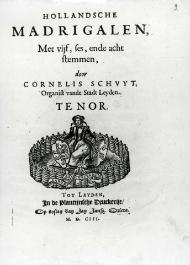 Schuyt was the son of Cornelis Floris Schuyt, the organist of the Basilica and the “Hoogland” Church in Leiden. After his study trip to Italy, to get an appointment, Cornelis in 1593 was hired, next to his father in both churches in Leiden. He also had the obligation to fulfill various musical tasks in urban service. After the death of father Cornelis Floris in 1601 became principal organist. He, was during his working life, in high regard and was buried in the Peters churche. Cornelis Schuyt left three bundles madrigals. Two are mainly in Italian texts by Torquato Tasso and Petrarca, the third one has Dutch texts by Daniel Heinsius. A fourth volume of Schuyt contains six-voiced instrumental works, written in the twelve modes. Organ music by Schuyt is not aviable anymore. Schuyts way of composing is pure Renaissance; influences of modern Italian monody of composers such as Claudio Monteverdi are not found in his works. That makes Schuyt a clearly more conservative composer than his famous contemporary, the Amsterdam Jan Pieterson Sweelinck.
Schuyt was the son of Cornelis Floris Schuyt, the organist of the Basilica and the “Hoogland” Church in Leiden. After his study trip to Italy, to get an appointment, Cornelis in 1593 was hired, next to his father in both churches in Leiden. He also had the obligation to fulfill various musical tasks in urban service. After the death of father Cornelis Floris in 1601 became principal organist. He, was during his working life, in high regard and was buried in the Peters churche. Cornelis Schuyt left three bundles madrigals. Two are mainly in Italian texts by Torquato Tasso and Petrarca, the third one has Dutch texts by Daniel Heinsius. A fourth volume of Schuyt contains six-voiced instrumental works, written in the twelve modes. Organ music by Schuyt is not aviable anymore. Schuyts way of composing is pure Renaissance; influences of modern Italian monody of composers such as Claudio Monteverdi are not found in his works. That makes Schuyt a clearly more conservative composer than his famous contemporary, the Amsterdam Jan Pieterson Sweelinck.
Jan Pieterszoon Sweelinck (also Swelingh, etc.)
(☼ Deventer, 1562 – † Amsterdam, 1621)
Psalm 130 & Toccata & Fantasia chromatica & Pavana lachrimae.
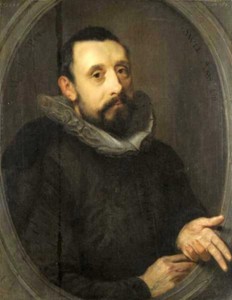 A Dutch composer, organist, harpsichordist, music-teacher, music-organizer, ensemble-leader. He is still regarded as the main Dutch composer of the early modern times, the transition period from Renaissance- to Baroque music. Sweelinck was as a composer and music educator known and famous far beyond the Dutch borders. Many of his vocal works appeared in print already during his lifetime and were spread throughout Europe. The famous (handwritten) Fitzwilliam Virginal Book, from about the year 1600 (297 pieces for the virginal), presents four of his compositions. Remarkably, during Sweelinck’s life no keyboard work (organ, harpsichord) is issued. His former student Samuel Scheidt published a collection of three-part fantasies, of which is so far not a single copy in a library or archive found. Although it is known that Sweelinck wrote much more music including other instrumental and/or vocal line, it seems nothing of it has survived.
A Dutch composer, organist, harpsichordist, music-teacher, music-organizer, ensemble-leader. He is still regarded as the main Dutch composer of the early modern times, the transition period from Renaissance- to Baroque music. Sweelinck was as a composer and music educator known and famous far beyond the Dutch borders. Many of his vocal works appeared in print already during his lifetime and were spread throughout Europe. The famous (handwritten) Fitzwilliam Virginal Book, from about the year 1600 (297 pieces for the virginal), presents four of his compositions. Remarkably, during Sweelinck’s life no keyboard work (organ, harpsichord) is issued. His former student Samuel Scheidt published a collection of three-part fantasies, of which is so far not a single copy in a library or archive found. Although it is known that Sweelinck wrote much more music including other instrumental and/or vocal line, it seems nothing of it has survived.
Adrianus Valerius ( Adriæn Valery)
(☼ Middelburg, ca. 1570 á 1575 – † Veere, 1625).
Valerius Variations & Three songs for the fatherland & Thanking prayer
& Happy is the country.
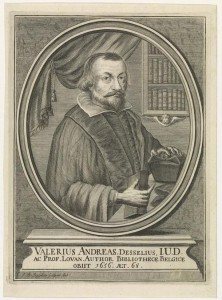 Valerius was the son of François Valery from France, a wealthy notary and customs official and he himself made a brilliant career in Veer as he became member of the city council and mayor of Veere. His most important work is the collection of “Geuzen liederen” with melodic notation, they are published in his “Nederlandtsche gedenck-clanck”, dealing with the Dutch Eighty Years’ War for Freedom. That war lasted from 1568 to 1648 so Valerius therefore reflects the state of affairs until shortly before his death, since the book a year later, in 1626 in Haarlem, appears by good care of his son François. The book contains the story of the rebellion, together with “geuze songs”, songs which he mostly wrote himself. The songs (mostly based on original poems but modified musically by Valerius), were for some time popular, but then fell into oblivion, to be loved from the end of the 19th century again as the patriotic songs. The best known song from that bundle is the “Wilhelmus”, the national anthem.
Valerius was the son of François Valery from France, a wealthy notary and customs official and he himself made a brilliant career in Veer as he became member of the city council and mayor of Veere. His most important work is the collection of “Geuzen liederen” with melodic notation, they are published in his “Nederlandtsche gedenck-clanck”, dealing with the Dutch Eighty Years’ War for Freedom. That war lasted from 1568 to 1648 so Valerius therefore reflects the state of affairs until shortly before his death, since the book a year later, in 1626 in Haarlem, appears by good care of his son François. The book contains the story of the rebellion, together with “geuze songs”, songs which he mostly wrote himself. The songs (mostly based on original poems but modified musically by Valerius), were for some time popular, but then fell into oblivion, to be loved from the end of the 19th century again as the patriotic songs. The best known song from that bundle is the “Wilhelmus”, the national anthem.
Jacob van Eyck
(☼ Heusden, ca. 1590 – † Utrecht, 1657)
What to do in the evening & The flute’s garden of delight & Psalm 9 & Bravade.
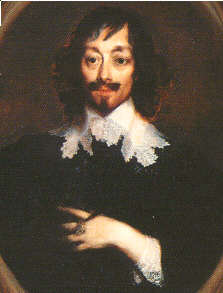 He was probably born in Heusen to noble parents. Van Eyck was blind at birth. He developed himself in Heusden as campanoloog (bellsexpert) and carilloneur. Van Eyck’s knowledge has been crucial for the development of the carillons. He discovered how the overtone structure of the clocks is made and how it can be affected by the shape of the clock. This knowledge was put into practice in cooperation with the bell-makers Peter- and François Hemony, whom he met in Zutphen. Together they poured, in 1644, the first perfectly tuned carillon for the Wijnhuis Tower in Zutphen. Unfortunately, that carillon is lost in a fire. The carillon of Deventer, they casted a few years later for the Great- or Lebuïnuskerk, still exists. Few years later he made many improvements to the bells in Utrecht. Jacob van Eyck was, in his spare time, a gifted fluut player. On summer evenings he entertained the walkers on the Janskerkhof with his virtuoso flute playing. In 1644 he started to publish his flute compositions. The collection Der Fluyten Lusthof appeared in two parts in 1649 and was dedicated to Constantijn Huygens, a distant cousin of van Eyck. The flute’s garden of delight comprises some hundred compositions, especially series variations on popular melodies and psalms. In these, van Eyck worked according to the process of “breaking”: the earning of the theme music into ever smaller note values (diminution). This has the effect of increasing difficulty. Partly because he was bound by unanimity, his style has a predominantly ornamental character.
He was probably born in Heusen to noble parents. Van Eyck was blind at birth. He developed himself in Heusden as campanoloog (bellsexpert) and carilloneur. Van Eyck’s knowledge has been crucial for the development of the carillons. He discovered how the overtone structure of the clocks is made and how it can be affected by the shape of the clock. This knowledge was put into practice in cooperation with the bell-makers Peter- and François Hemony, whom he met in Zutphen. Together they poured, in 1644, the first perfectly tuned carillon for the Wijnhuis Tower in Zutphen. Unfortunately, that carillon is lost in a fire. The carillon of Deventer, they casted a few years later for the Great- or Lebuïnuskerk, still exists. Few years later he made many improvements to the bells in Utrecht. Jacob van Eyck was, in his spare time, a gifted fluut player. On summer evenings he entertained the walkers on the Janskerkhof with his virtuoso flute playing. In 1644 he started to publish his flute compositions. The collection Der Fluyten Lusthof appeared in two parts in 1649 and was dedicated to Constantijn Huygens, a distant cousin of van Eyck. The flute’s garden of delight comprises some hundred compositions, especially series variations on popular melodies and psalms. In these, van Eyck worked according to the process of “breaking”: the earning of the theme music into ever smaller note values (diminution). This has the effect of increasing difficulty. Partly because he was bound by unanimity, his style has a predominantly ornamental character.
Constantijn Huygens
(☼ the Hague, 1596 – † the Hague, 1687)
Air de cour and two Dutch songs & Symphonietta nr 1 &
Pathodia Sacra et Profana & Two psalms.
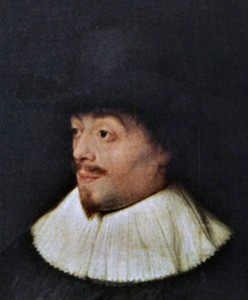 Constantine received a thorough education and revealed himself early on as a gifted child. He started taking singing lessons and learned to read music using de golden buttons on his jacket. It is striking that Christiaan Sr. teached the boys the ‘modern’ system of seven note-names, instead of the traditional, but much more complicated hexachords. Two years later the first lessons on the viola da gamba started. Then came the lute and harpsichord. Especially for the lute showed Constantine an exceptional talent. Already at the age of eleven he was asked to play the lute for a group of Danish envoys, in 1618, on his first diplomatic trip, he played for King James I of England.
Constantine received a thorough education and revealed himself early on as a gifted child. He started taking singing lessons and learned to read music using de golden buttons on his jacket. It is striking that Christiaan Sr. teached the boys the ‘modern’ system of seven note-names, instead of the traditional, but much more complicated hexachords. Two years later the first lessons on the viola da gamba started. Then came the lute and harpsichord. Especially for the lute showed Constantine an exceptional talent. Already at the age of eleven he was asked to play the lute for a group of Danish envoys, in 1618, on his first diplomatic trip, he played for King James I of England.
Carel Hacquart (Brugge?)
(☼ ca. 1640 – † ca. 1701)
Suite 10 in A minor & Suites for Viola da Gamba Opus III & Sonata quinta &
Dialogue between Bacchus and Ceres (1678-1680).
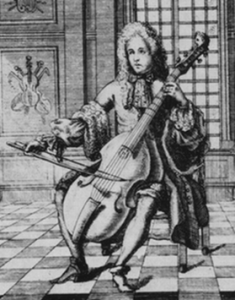 He was a composer who was particularly active in the United Provinces (now the Netherlands). Carel Hacquart was, with his brother Philip, trained as a choirboy in the St. Bavo Cathedral in Ghent. In 1679 he settled in The Hague, where he became a teacher of many wealthy patricians and further he organized concerts with support of the elderly Constantijn Huygens. In 1686 he wrote for two of these students, twelve suites. This could be done on a gamba, two prawns or shrimp with a continuo accompaniment. From the period after 1686 not much is known, it is suspected that he left for England.
He was a composer who was particularly active in the United Provinces (now the Netherlands). Carel Hacquart was, with his brother Philip, trained as a choirboy in the St. Bavo Cathedral in Ghent. In 1679 he settled in The Hague, where he became a teacher of many wealthy patricians and further he organized concerts with support of the elderly Constantijn Huygens. In 1686 he wrote for two of these students, twelve suites. This could be done on a gamba, two prawns or shrimp with a continuo accompaniment. From the period after 1686 not much is known, it is suspected that he left for England.
Johan Schenck
(☼ Amsterdam, 1660 – Düsseldorf, † ca. 1716)
Now the earth may have joy & Rondeau in A- majeur & Sarabande in a-minor
& Alegro Presto.
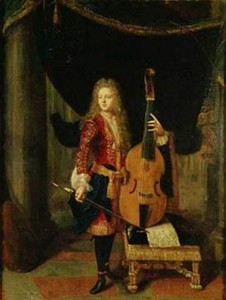 Jan Schenk was the son of Wijnant Schenk, a wine merchant from Cologne and Catharina Cempius or van Kempen, from Gladbeck. Around 1700 he worked with Henry Anders, David Petersen, Carl Rosier and Servæs de Koninck, part of a group of composers on texts (especially from the poets Alewijn and Sweerts) to compose Dutch songs. From 1697 on, he was in Dusseldorf “Kammermusikus” at the court of Johann Wilhelm II, Elector Palatine, a position he held until at least 1712, and perhaps until 1716 when the Elector died. In those years he still published in Amsterdam and, at the most famous publisher of that time, Estienne Roger, four extra bulky parts gamba music and a bundle violin sonatas. Over the last years of his life not much is known.
Jan Schenk was the son of Wijnant Schenk, a wine merchant from Cologne and Catharina Cempius or van Kempen, from Gladbeck. Around 1700 he worked with Henry Anders, David Petersen, Carl Rosier and Servæs de Koninck, part of a group of composers on texts (especially from the poets Alewijn and Sweerts) to compose Dutch songs. From 1697 on, he was in Dusseldorf “Kammermusikus” at the court of Johann Wilhelm II, Elector Palatine, a position he held until at least 1712, and perhaps until 1716 when the Elector died. In those years he still published in Amsterdam and, at the most famous publisher of that time, Estienne Roger, four extra bulky parts gamba music and a bundle violin sonatas. Over the last years of his life not much is known.
Unico Willem, Count of Wassenær Obdam
(☼ Delden, 1692 – † the Hague, 1766)
Six concerts
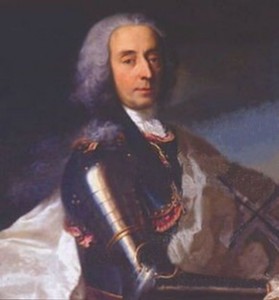 The count van Wassenær was musically very talented but he did not present his musical skills in public, because this kind of activity was not well accepted in his aristocratic environment. This made it possible that documents written by him are attributed to others. He was the composer of the lovely Concerti Armonici, he wrote them between 1725 and 1740. These concerts are published the Italian violinist Carlo Ricciotti (1681-1756) to whom initially these concerts were attributed. Van Wassenær was therefore also called “the mystery composer”. In 1979, a manuscript of the six concerts was found in the archives of the Castle Twickel, entitled Concerti Armonici. Although no music manuscript of Van Wassenær himself was found, it contains the printed partitures with a handwritten introduction by Van Wassenær saying ‘. Partition de mes concerts Gravez par le Sr. Ricciotti “(partiture of my concerts, printed by Mr. Ricciotti). Examination by the musicologist Albert Dunning subsequently demonstrated convincingly that these Concerti Armonici are written by van Wassenær. This work was (in an arrangement for a brass ensemble) performed on September 15, 2009, Budget Day, by members of the Hague Philharmonic during the joint session of Parliament in the Hall of Knights in The Hague. Wassenærs of three sonatas for recorder and basso continuo were only discovered in the early nineties. Before that they had read Wassenær as Wallenær.
The count van Wassenær was musically very talented but he did not present his musical skills in public, because this kind of activity was not well accepted in his aristocratic environment. This made it possible that documents written by him are attributed to others. He was the composer of the lovely Concerti Armonici, he wrote them between 1725 and 1740. These concerts are published the Italian violinist Carlo Ricciotti (1681-1756) to whom initially these concerts were attributed. Van Wassenær was therefore also called “the mystery composer”. In 1979, a manuscript of the six concerts was found in the archives of the Castle Twickel, entitled Concerti Armonici. Although no music manuscript of Van Wassenær himself was found, it contains the printed partitures with a handwritten introduction by Van Wassenær saying ‘. Partition de mes concerts Gravez par le Sr. Ricciotti “(partiture of my concerts, printed by Mr. Ricciotti). Examination by the musicologist Albert Dunning subsequently demonstrated convincingly that these Concerti Armonici are written by van Wassenær. This work was (in an arrangement for a brass ensemble) performed on September 15, 2009, Budget Day, by members of the Hague Philharmonic during the joint session of Parliament in the Hall of Knights in The Hague. Wassenærs of three sonatas for recorder and basso continuo were only discovered in the early nineties. Before that they had read Wassenær as Wallenær.
Christiaan Frederik Ruppe
(☼ Bad Salzungen, 1753 – † Leiden, 1826).
From the Christmas Catante coro (musical visualisation by Božidar Svetek)
& “Hold on! Batavians!”, (1799) en “Jesus (= hope) Risen”, (1796-1797)
& Easter cantate & Fuga in C.
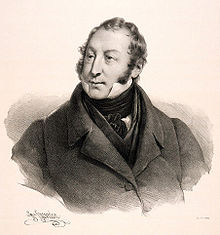 Son of a Wilprechtsrode organist. It is not known when he begun his composing, but it is known that in 1788 he became an organist at the Lutheran church in Leiden Hooglandse, where he insisted on building new organs. Probably on the occasion of their inauguration he composed organ concert C major, which is preserved only in the 19th century piano version piano. In 1790 Rupp was a teacher of music and director, and in 1796 he founded the choir girly-boy, consisted of orphans.
Son of a Wilprechtsrode organist. It is not known when he begun his composing, but it is known that in 1788 he became an organist at the Lutheran church in Leiden Hooglandse, where he insisted on building new organs. Probably on the occasion of their inauguration he composed organ concert C major, which is preserved only in the 19th century piano version piano. In 1790 Rupp was a teacher of music and director, and in 1796 he founded the choir girly-boy, consisted of orphans.
.
Wolfgang Amadeusz Mozart
(☼ Salzburg, 1756 – † Wenen, 1791)
Holt on! Batavians! (1766): KV 24 (8 variations) & Wilhelmus KV 25 (7 variations) & Gallimatthias musicum in D majeur: KV 32 & Always is Kortjakje sick.
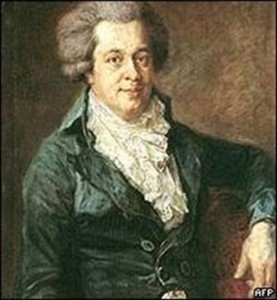 The Mozart family came to The Hague in December 1765 at the invitation of Princess Caroline of Nassau-Weilburg, sister of the Prince of Orange and left in March 1766. (The occasion was given by a big foreign trip through Europe of the Mozart family). Wolfgang Amadeus was just nine years old. During this trip Mozarts had the opportunity to participate in international musical life, which had a huge impact on the music of Wolfgang Amadeus. Only 30 compositions of that time survived – the little composer wrote some of them in honor of Princess Caroline. In The Hague he created mainly Symphony No. 5 in B, Symphony No. 7a in G “Alte Lambacher”, 3 sonatas for harpsichord and violin (in G, the F and Bes), and seven variations in D “Willem van Nassau” and 8 Variations in G “Laat ons juichen Bataven “.
The Mozart family came to The Hague in December 1765 at the invitation of Princess Caroline of Nassau-Weilburg, sister of the Prince of Orange and left in March 1766. (The occasion was given by a big foreign trip through Europe of the Mozart family). Wolfgang Amadeus was just nine years old. During this trip Mozarts had the opportunity to participate in international musical life, which had a huge impact on the music of Wolfgang Amadeus. Only 30 compositions of that time survived – the little composer wrote some of them in honor of Princess Caroline. In The Hague he created mainly Symphony No. 5 in B, Symphony No. 7a in G “Alte Lambacher”, 3 sonatas for harpsichord and violin (in G, the F and Bes), and seven variations in D “Willem van Nassau” and 8 Variations in G “Laat ons juichen Bataven “.
Johann Wilhelm Wilms
(☼ Witzhelden 1772 – Amsterdam, 1847)
Wien Neêrlandsch bloed & Flute Concerto in D-major, Op.24 (c. 1813)
Symphony No.6 in D-minor, Op. 58 (1820)
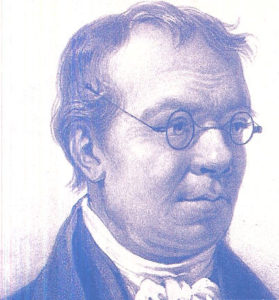 Johann Wilhelm Wilms was a Dutch-German composer, best known for setting the poem Wien Neêrlands Bloed to music, which served as the Dutch national anthem from 1815 to 1932. Wilms was born in Witzhelden, a small town near Solingen. After receiving lessons from his father and oldest brother in piano and composition, Wilms studied flute on his own. He moved to Amsterdam in 1791 where he played the flute in two orchestras and was soloist in Mozart and Beethoven piano concertos, giving them their Dutch premieres. He also taught piano at the Koninklijk Nederlandsch Instituut voor Wetenschappen. As the events of the French Revolution affected the Netherlands, Wilms wrote several patriotic hymns. However, following the fall of Napoleon, and the return of the House of Orange to power, Wilms in 1816 won the open competition for the new Dutch anthem with “Wien Neêrlandsch bloed”. In 1822 Wilms largely withdrew from public musical life, becoming in 1823 the organist of the Mennonite congregation “Het Lam” in Amsterdam. From then on, he mainly composed occasional works, such as the annual cantata for philanthropic society to Nut van ‘t Algemeen. Willms’ compositional output includes seven symphonies, concertos, overtures, chamber music and piano music.
Johann Wilhelm Wilms was a Dutch-German composer, best known for setting the poem Wien Neêrlands Bloed to music, which served as the Dutch national anthem from 1815 to 1932. Wilms was born in Witzhelden, a small town near Solingen. After receiving lessons from his father and oldest brother in piano and composition, Wilms studied flute on his own. He moved to Amsterdam in 1791 where he played the flute in two orchestras and was soloist in Mozart and Beethoven piano concertos, giving them their Dutch premieres. He also taught piano at the Koninklijk Nederlandsch Instituut voor Wetenschappen. As the events of the French Revolution affected the Netherlands, Wilms wrote several patriotic hymns. However, following the fall of Napoleon, and the return of the House of Orange to power, Wilms in 1816 won the open competition for the new Dutch anthem with “Wien Neêrlandsch bloed”. In 1822 Wilms largely withdrew from public musical life, becoming in 1823 the organist of the Mennonite congregation “Het Lam” in Amsterdam. From then on, he mainly composed occasional works, such as the annual cantata for philanthropic society to Nut van ‘t Algemeen. Willms’ compositional output includes seven symphonies, concertos, overtures, chamber music and piano music.
Johannes Bernardus van Bree
(☼ Amsterdam, 1801 – † Amsterdam, 1857)
Overture Le Bandit & Allegro for four strijkkwartetten & Festive Overture
& Nocturne nr 2.
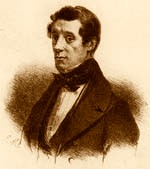 Bree is seen as one of the most prominent composers in the first half of the 19th century. His works were mentioned with appreciation at home and abroad. During the Belgian Revolution in 1830 he wrote a number of patriotic songs which earned him the title “national” composer. Although only few of his compositions have passed the ravages of time and his music after his death has fallen quickly into oblivion, van Bree is known from several overtures and symphonies, a violin concerto, choral works, operas “Saffo” (1834) and “Le Bandit” (1835) the singing game “Please observe” (1826), string quartets, piano pieces, and a strange but attractive Allegro for four string quartets, which was first performed by members of the Cecilia Orchestra in 1845 and now settled back on the music programs. His works are partly of the German school of Spohr and Mendelssohn, but also partly oriented on the lighter French style Boïeldieu and Adam.
Bree is seen as one of the most prominent composers in the first half of the 19th century. His works were mentioned with appreciation at home and abroad. During the Belgian Revolution in 1830 he wrote a number of patriotic songs which earned him the title “national” composer. Although only few of his compositions have passed the ravages of time and his music after his death has fallen quickly into oblivion, van Bree is known from several overtures and symphonies, a violin concerto, choral works, operas “Saffo” (1834) and “Le Bandit” (1835) the singing game “Please observe” (1826), string quartets, piano pieces, and a strange but attractive Allegro for four string quartets, which was first performed by members of the Cecilia Orchestra in 1845 and now settled back on the music programs. His works are partly of the German school of Spohr and Mendelssohn, but also partly oriented on the lighter French style Boïeldieu and Adam.
Joannes Josephus Viotta
(☼ Amsterdam, 1814 – † Amsterdam, 1859).
Piet Hein rapsody (the silver fleet) & Sint Nicolaas (The moon shines through the trees)
& String quartet no. 3 & Sterke jongens stoere knapen (Strong guys, tough guys).
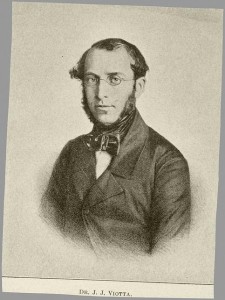 Son of an Italian merchant, doctor and musician, best known from his folk songs. Despite the lack of formal musical training he managed to gain an important position in the music scene of Amsterdam. He composed orchestral and piano pieces. As a composer he particularly distinguished himself for the resurrection of Dutch songs. Some of them are known today, such as “Zie de maan schijnt door de bomen” and “Een op de Zandweg karretje reed”.
Son of an Italian merchant, doctor and musician, best known from his folk songs. Despite the lack of formal musical training he managed to gain an important position in the music scene of Amsterdam. He composed orchestral and piano pieces. As a composer he particularly distinguished himself for the resurrection of Dutch songs. Some of them are known today, such as “Zie de maan schijnt door de bomen” and “Een op de Zandweg karretje reed”.
.
John Joseph Hermann Verhulst
(☼ the Hague, 1816 – † Bloemendaal, 1891).
Ouverture Gijsbrecht van Æmstel & To you, king of the centuries
& Symphony in E minor & Ouverture in B minor.
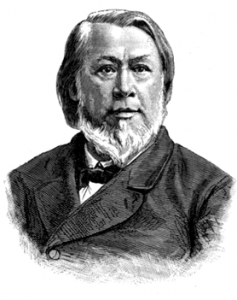 As a composer and as a top official in the Dutch musical life in the 19th century, his influence was significant. He began singing in the choir. In later years he became a prominent person in the Dutch music scene of the 19th century, which had a major impact on it. He performed at the royal courts, he served as conductor of orchestras, including Leipzig (Orchestra Euterpe) – there he composed his Symphony in E, and other works. After returning to The Hague focused on writing songs. But he was conservative and did not accept works of Berlioz, Liszt and Wagner.
As a composer and as a top official in the Dutch musical life in the 19th century, his influence was significant. He began singing in the choir. In later years he became a prominent person in the Dutch music scene of the 19th century, which had a major impact on it. He performed at the royal courts, he served as conductor of orchestras, including Leipzig (Orchestra Euterpe) – there he composed his Symphony in E, and other works. After returning to The Hague focused on writing songs. But he was conservative and did not accept works of Berlioz, Liszt and Wagner.
Bernardus Josephus Wilhelmus Zweers
(☼ Amsterdam 1854 – † Amsterdam, 1924).
Sint-Nicolaas Cantate (Deel I & II) & Aan mijn vaderland & Third Symphony.
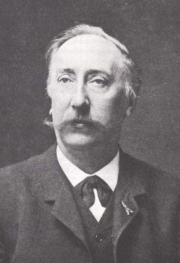 Son of the amateur musician H.A. Zweers. He used to compose since he was 14 years old. Due to the selection of topics of his compositions (Rembrandt, van Vondel’s Gijsbrecht Aemstel, Dutch landscape) Bernardus is considered the most national Dutch composer. On the other hand, his music shows a strong influence works of Richard Wagner. The most famous Zweers work is the Third Symphony, but due to the momentum of the composition is it rarely exhibited on the stage. Third Symphony combines folk melodies with the lyrical descriptions of the Dutch landscape. Zweers was also a good singer, organist and choir conductor.
Son of the amateur musician H.A. Zweers. He used to compose since he was 14 years old. Due to the selection of topics of his compositions (Rembrandt, van Vondel’s Gijsbrecht Aemstel, Dutch landscape) Bernardus is considered the most national Dutch composer. On the other hand, his music shows a strong influence works of Richard Wagner. The most famous Zweers work is the Third Symphony, but due to the momentum of the composition is it rarely exhibited on the stage. Third Symphony combines folk melodies with the lyrical descriptions of the Dutch landscape. Zweers was also a good singer, organist and choir conductor.
.
Johannes Maria Alphons Diepenbrock
(☼ Amsterdam, 1862 – † Amsterdam, 1921).
Ouverture de Vogels & Elektra & Stabat mater speciosa & Te Deum.
 The most prominent Dutch composer of his time, whose music was not created in a typically Dutch style. Diepenbrock’s work is valued for the way he combined poetry and music, harmony between vocals and the accompaniment of instruments. Diepenbrock conquered the music scene in 1902 with “Te Deum”.
The most prominent Dutch composer of his time, whose music was not created in a typically Dutch style. Diepenbrock’s work is valued for the way he combined poetry and music, harmony between vocals and the accompaniment of instruments. Diepenbrock conquered the music scene in 1902 with “Te Deum”.
.
.
.
.
.
Jurriaan Hendrik Andriessen
(☼ Haarlem, 1925 – † the Hague, 1996).
Sonnet 43 & Four poems & Berkshire Symphonies & Drie vissers.
 Also known under the pseudonym Leslie Cool. He came from a family of recognized composers. He specialized in writing music for theater and movies, but also created symphonies and music for ballet. His works have been performed at the time of the coronation of Queen Beatrix and during the Silver Jubilee of Queen Juliana.
Also known under the pseudonym Leslie Cool. He came from a family of recognized composers. He specialized in writing music for theater and movies, but also created symphonies and music for ballet. His works have been performed at the time of the coronation of Queen Beatrix and during the Silver Jubilee of Queen Juliana.
.
.
Simeon ten Holt
(☼ Bergen, North Holland, 1923 – † Alkmaar, 2012).
Canto Ostinato & Bi-Ba-Bo & Palimpsest & Horizon.
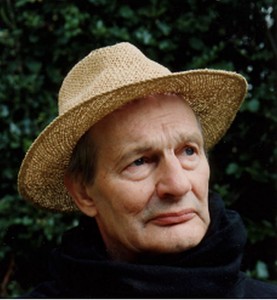 Son of the painter Henri F. Holt. Ten Holt was born in Bergen, North Holland, the Netherlands, and studied with Jakob van Domselaer, eventually developing a highly personal style of minimal composition. Van Domselaer’s influence on ten Holt’s musical philosophy was considerable, with the younger composer picking up van Domselaer’s interests in the links between music and visual art, in music’s relationship with mathematics, and in the use of the piano as a principal instrument in his compositions. Ten Holt generally used consonant, tonal materials and his works are organized in numerous cells, made up of a few measures each, which are repeated ad libitum according to the player’s preference. Many of his works are for piano or ensembles of multiple pianos. His most famous work is Canto Ostinato, which he wrote in 1976 and is one of the most famous classical works in (modern) Dutch music history.
Son of the painter Henri F. Holt. Ten Holt was born in Bergen, North Holland, the Netherlands, and studied with Jakob van Domselaer, eventually developing a highly personal style of minimal composition. Van Domselaer’s influence on ten Holt’s musical philosophy was considerable, with the younger composer picking up van Domselaer’s interests in the links between music and visual art, in music’s relationship with mathematics, and in the use of the piano as a principal instrument in his compositions. Ten Holt generally used consonant, tonal materials and his works are organized in numerous cells, made up of a few measures each, which are repeated ad libitum according to the player’s preference. Many of his works are for piano or ensembles of multiple pianos. His most famous work is Canto Ostinato, which he wrote in 1976 and is one of the most famous classical works in (modern) Dutch music history.
Otto Ketting
(☼ Amsterdam, 1935 – † the Hague, 2012).
Dokter Pulver & De provincie & Symfonie 1 & Intrada.
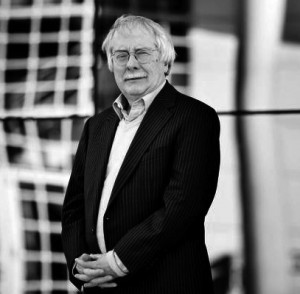 Ketting was born the son of the composer Piet Necklace. He studied at the Royal Conservatory in The Hague and later by Karl Amadeus Hartmann in Munich. He wrote mainly opera-, chamber-, ballet- and film-music. From 1967 to 1971 he taught as a head teacher instrumen-tation and composition at the Rotterdam Con-servatory, then he transferred to the Royal Conservatory in The Hague, where he remained until 1974 and held there the same function as in Rotterdam. In subsequent years he focused more on conducting and publishing. He wrote music for some films of Bert Haanstra (including Alleman and Doctor Pulder sow poppies) and for the film Anna Erik van Zuylen.
Ketting was born the son of the composer Piet Necklace. He studied at the Royal Conservatory in The Hague and later by Karl Amadeus Hartmann in Munich. He wrote mainly opera-, chamber-, ballet- and film-music. From 1967 to 1971 he taught as a head teacher instrumen-tation and composition at the Rotterdam Con-servatory, then he transferred to the Royal Conservatory in The Hague, where he remained until 1974 and held there the same function as in Rotterdam. In subsequent years he focused more on conducting and publishing. He wrote music for some films of Bert Haanstra (including Alleman and Doctor Pulder sow poppies) and for the film Anna Erik van Zuylen.
Louis Andriessen
(☼ Utrecht, 1939).
De staat & Symfoniën der Nederlanden & Letter from Cathy & De vakbond & Mysteriën.
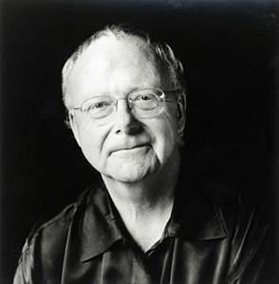 Louis Andriessen is a son of composer Hendrik Andriessen and a brother of composer Jurriaan Andriessen. As a musician he integrates in his compositions different music genres, and especially the performing arts: theater, literature, dance and film. From his compositions and teachings the Dutch ensemble culture (partly) emerged. Andriessen is one of the founders of the Hague School, with composers such as Jan van Vlijmen, Diederik Wagenaar and Gilius of Bergeijk. In his music the complex chords, played on (much) wind instruments and percussion are very important. His most memorable works are compositions for large ensambles: “Mausoleum”, “Il Principe”, “The State”, “The Time” and operas “The Matter”, “Rosa” (in collaboration with Peter Greenaway) and “Writing to Vermeer”. Since 2003 Adriessen is also professor of creative arts at the university of Leiden. In his inaugural speech, he analyzed his composition “Letter from Cathy” in 2003.
Louis Andriessen is a son of composer Hendrik Andriessen and a brother of composer Jurriaan Andriessen. As a musician he integrates in his compositions different music genres, and especially the performing arts: theater, literature, dance and film. From his compositions and teachings the Dutch ensemble culture (partly) emerged. Andriessen is one of the founders of the Hague School, with composers such as Jan van Vlijmen, Diederik Wagenaar and Gilius of Bergeijk. In his music the complex chords, played on (much) wind instruments and percussion are very important. His most memorable works are compositions for large ensambles: “Mausoleum”, “Il Principe”, “The State”, “The Time” and operas “The Matter”, “Rosa” (in collaboration with Peter Greenaway) and “Writing to Vermeer”. Since 2003 Adriessen is also professor of creative arts at the university of Leiden. In his inaugural speech, he analyzed his composition “Letter from Cathy” in 2003.
Svitlana Azarova
(☼ Ismajel Ukraïne, 9 january 1976)
Motet (in old style) & Outvoice, outstep & outwalk (for bass-clarinet)
& Chacha 2. & Pure thoughts transfixed
In 1996 Svitlana graduated, as a music teacher, at the Ismail Pedagogical Institute and went to Odessa State A.V. Nezhdanova Conservatory where she studied composition with the professors Olexander Krasotov and Karmella Tsepkolenko. She completed her studies as a composer in 2000. In the same year she took master classes with Faraj Karaev and Krzystof Meyer in Azerbaijan. In 2003 Svitlana participated in the 6-month Gaude Polonia (scholarship program of the Polish Ministry of Culture, at the Frédéric Chopin Academy of Music in Warsaw under Professor Marcin Blazewicz. Alumnus from Odessa conservatoire and later MMus in composition under Theo Loevendie at Amsterdam conservatoire, the Ukrainian Svitlana Azarova recides in The Hague since 2005.
See also the website: Svitlana Azarova.
Prepared by Han Tiggelaar
Sources: Wikipedia and youtube

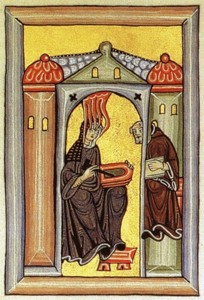
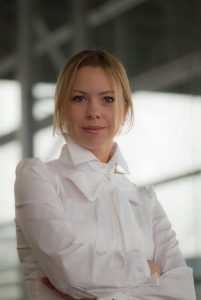
Jan Pieterszoon Sweelinck’s Psalm 130 is beautiful and the recording presented on the YouTube page referenced above is in itself beautifully recorded. Highly recommended.
Mozart is not Dutch. Why is he even on this list?
Becouse he wrote much music when staying in den Hague
including:
to the anthem of the Batavian republic
(as the Netherlands were called, for a short while)
(this versian is still poulair to the present republicans)
and:
to the (old and present) anthem of the Netherlands (Wilhelmus)
(this version is hardly known today).
To show he (and his father) wrote much more I added 2 other compositions.
Hutte
Where is Johann Wilhelm Wilms?! I don’t believe his name is missing!
Thank you for your notice. We will write about the composer as soon as possible.